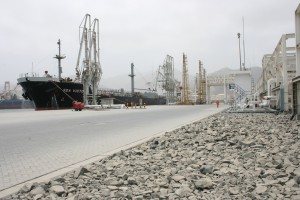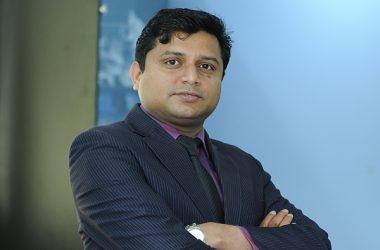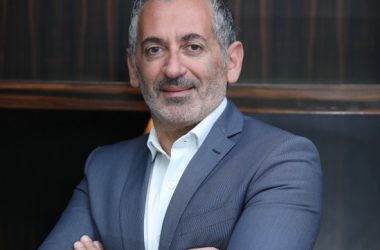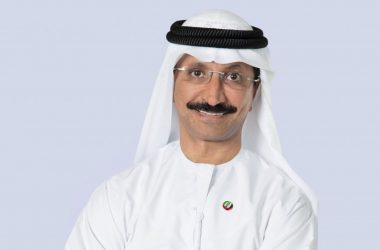After it was decided that its current IT infrastructure was out dated and upgrades weren’t possible, the Port of Fujairah took on a massive implementation to transform its entire IT system with Oracle at the helm of the project.
The port invested in a rather large and rather impressive makeover of its IT infrastructure by implementing Oracle E-Business Suite R12 and Oracle Business Intelligence Standard Edition. The multi-purpose port is the only one of its kind on the Eastern Seaboard in the UAE and specialises in a vast range of services including general cargo projects, bulk cargo projects, wet bulk cargo projects, port facilities for small supply craft users and agents and container activity.
With the port dedicated to fast growth and enhancing its range of facilities, it had to replace its ageing IT system and look to Oracle in order to support the integration of its financial processes and lay down secure IT foundations for the future.
“We had been using Prophecy since 1997, an SME ERP by a company based in Australia, which was running on an Ingres database, but we couldn’t upgrade this system due to a lack of local support,” says Madhusudhan Sarangi, IT Manager, Port of Fujairah.
“It was unfortunate because we had a good relationship with this company and an update was planned but they couldn’t find the market presence here, so we were forced to discontinue our business with them,” he adds.
Sarangi, who has been with the Port of Fujairah since 1993, says the decision to employ Oracle as the vendor for its new solutions was done by default. The port needed to create solid foundations for growth and enable transparent business-wide reporting and planning, seen as vital for business success in the competitive travel and transportation sector.
“We didn’t want to make the same mistake as we did before and choose a vendor which may not be there in a few years. Oracle has the market presence, it has the implementers in place – it was the only vendor we tried,” he says.
The Oracle solution comprised integrated, global business applications in order to tighten in-house controls for payroll, bank reconciliation and HR .
A smooth sailing
The implementation was done in a speedy seven months by long-term partners Computer Network Systems and Fujitsu. Once the implementation was complete, the port upgraded to the latest releases (12.1) using its own in-house staff.
“We started in May 2008, once the software was in place Financials and Distribution went live in December 2008, whilst HR and Payroll when through two months of parallel runs before going live. It was all per schedule,” says Sarangi.
He adds that the port ran into some issues with the Oracle reports upon implementation. It added new HP Unix Itanium server hardware to run the ERP but didn’t want too much customisation as it didn’t want to encounter too many difficulties in the future.
“The implementers gave our users training on the modules, prepared detailed user manuals and did hand holding in the first three to four months after the system went live. The reports were the most difficult part for us and our finance insisted on a parallel run. We started then to upload master files before going live,” he says.
“This run was really helpful for us – it helped us discover any reconciliation that needed to be done. You can’t sit back worrying about if you have the right tool or not, the real question needs to be, can our team use the tool?” he adds.
Sarangi’s IT team is made up of six developers, one DBA, one Oracle technical specialist, three data centre and network support members and five system operators – a team he claims has a good relationship with Oracle, which has stepped in at pivotal times for the port.
“Our team took on the entire upgrade in 2011 with the knowledge that Oracle would help us out if we stumbled upon any issues. They provided all the solutions we needed and now we are successfully upgraded to the 12.1 model,” Sarangi says.
Oracle’s input and solutions have helped the Port of Fujairah not only to upgrade from the infrastructure it had, but also to provide a blueprint for the future expansion of the port’s IT capabilities. The new and updated system will now support the capabilities to extend and provide more information on its dashboard.
“There isn’t a limit to how much we can expand now thanks to this model, however, we haven’t moved into this area yet because we are a medium sized port and we haven’t needed to,” Sarangi says.
Keeping the port secure
With such an influx of IT facilities, organisations are open to a higher security risk. Moreover, with cyber security becoming increasingly popular, there has never been a more critical time to have secure infrastructure.
“We are relatively secure in all areas of our infrastructure. Our desktops and laptops use a Symantec anti-virus, our internal users have an ISA Proxy server and ASA firewall, our mail system uses Borderware with anti-spam and anti-virus and our external users have data encryption,” Sarangi says.
“We recently put in extra network security features in our systems. Fortunately, we don’t have many people accessing our system from the outside, but once we grow and develop and have data placed elsewhere, we will need to look at higher levels of security,” he adds.
Sarangi and his team appear to be well equipped for what he describes as a very proactive future. By training its staff in the most efficient way to be able to run Oracle’s latest updates, the port can now be safer in the knowledge that it has a more solid IT infrastructure to support the its operations and growth.
“Our business applications are our main priority for the future. Tracking our ship movements and our cargo loading operations, we haven’t upgraded the technology here yet and we can’t go on using the current system for long. It’s easy to maintain and it’s no hassle but we will need to upgrade in the coming months. Planning is underway for this and we will approach Oracle for the latest update soon,” Sarangi says.
“Once these new technologies are inserted and our corporate people are trained in the usage of them, we can be confident that these systems will be good for 15 to 20 years. We won’t make the same mistake as we did last time by adopting processing which can quickly become redundant,” he adds.
Such upgrades and implementations do not of course come without their costs and Capex budgets with full details and justification is due by the Port’s IT team this month.
“This is submitted to finance for review. After that it goes to higher management for final approval. There has been a significant increase in the budget due to the upgrade of our infrastructure, as well as replacement of the legacy systems and introduction of disaster recovery (DR) systems,” Sarangi says.
Gaining recognition
Sarangi appears very upbeat and positive about the changes and implementations made over the past few years and is very satisfied with the partnership with Oracle, Fujitsu and Computer Network Systems. The importance of IT departments in today’s world is slowly being recognised on a grand scale, he says.
“We’re not the apple of the management’s eye, but the operating systems are big sections now. Today people are very dependent on IT and are able to give them new solutions in order to improve productivity,” Sarangi says.
“It is becoming more difficult to find the properly qualified people in IT and they’re becoming increasingly expensive to hire, this shows the level of quality and skill needed is much higher now than ever,” he adds.
Whilst the Port’s IT department does have to fight hard to have its budgets approved, Sarangi says the management is beginning to recognise the strategic importance IT to the port’s success. The Oracle E-Business Suite, complete with all its upgrades, should see the Port of Fujairah through the next couple of decades.






